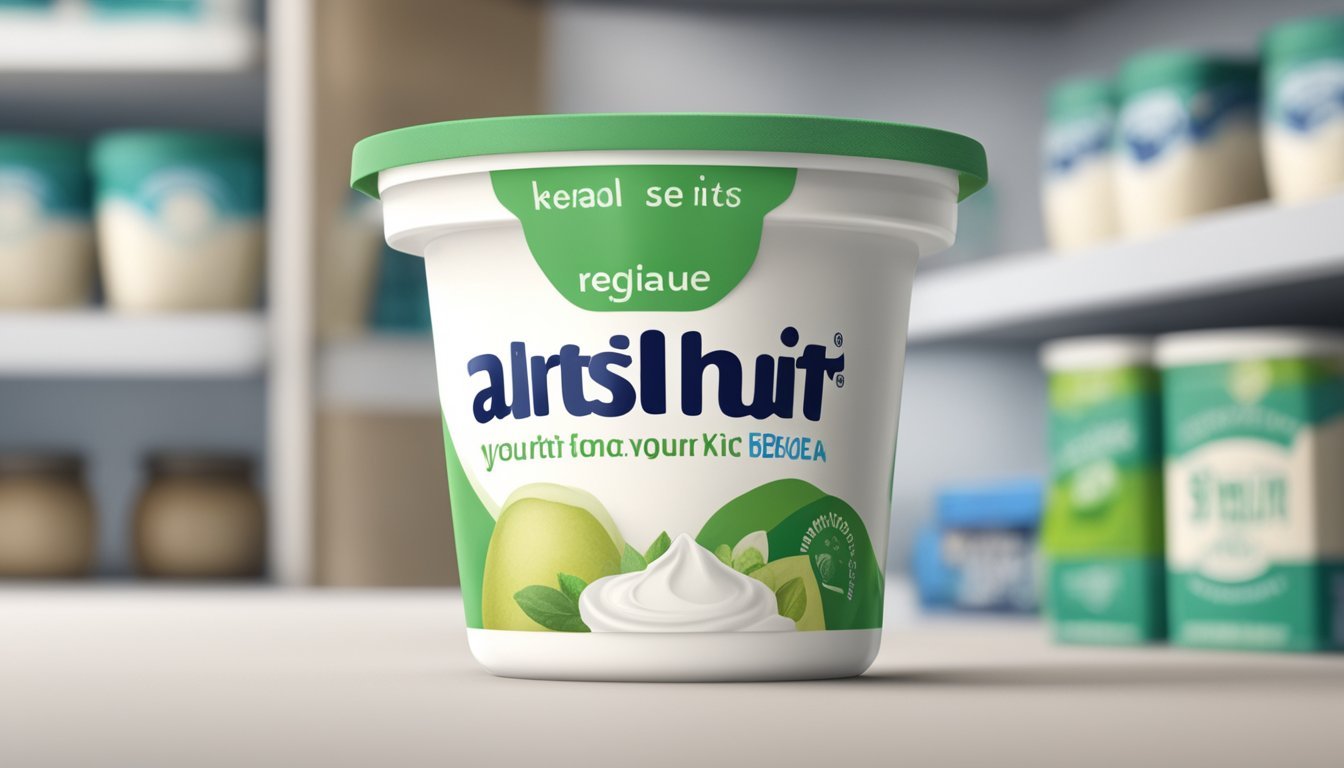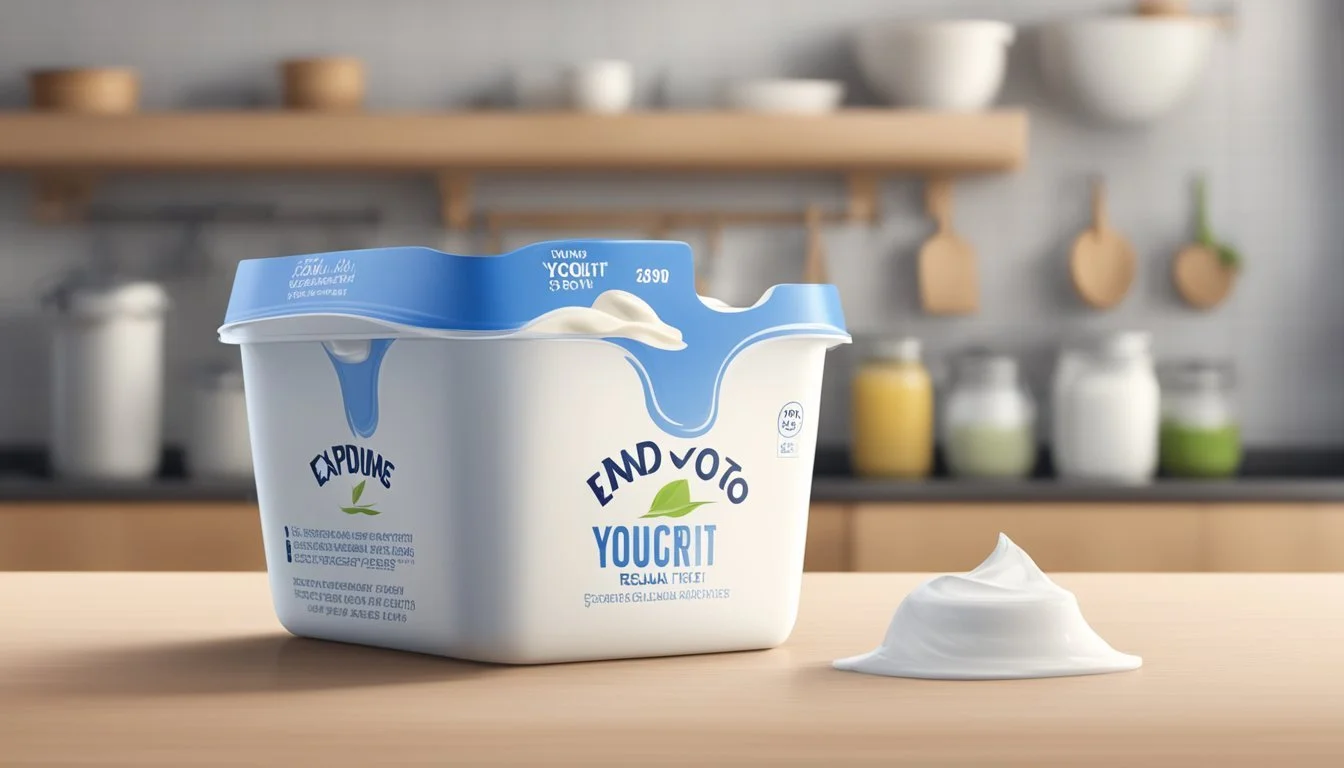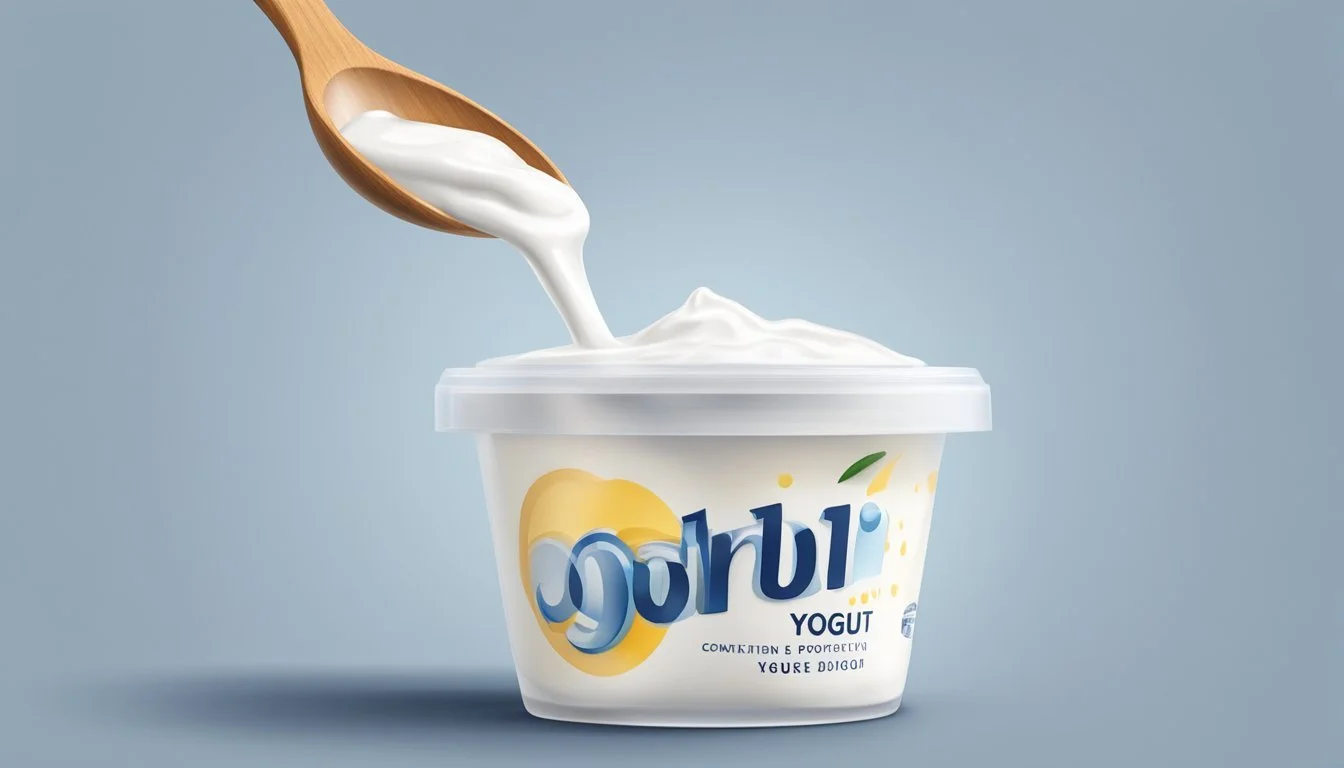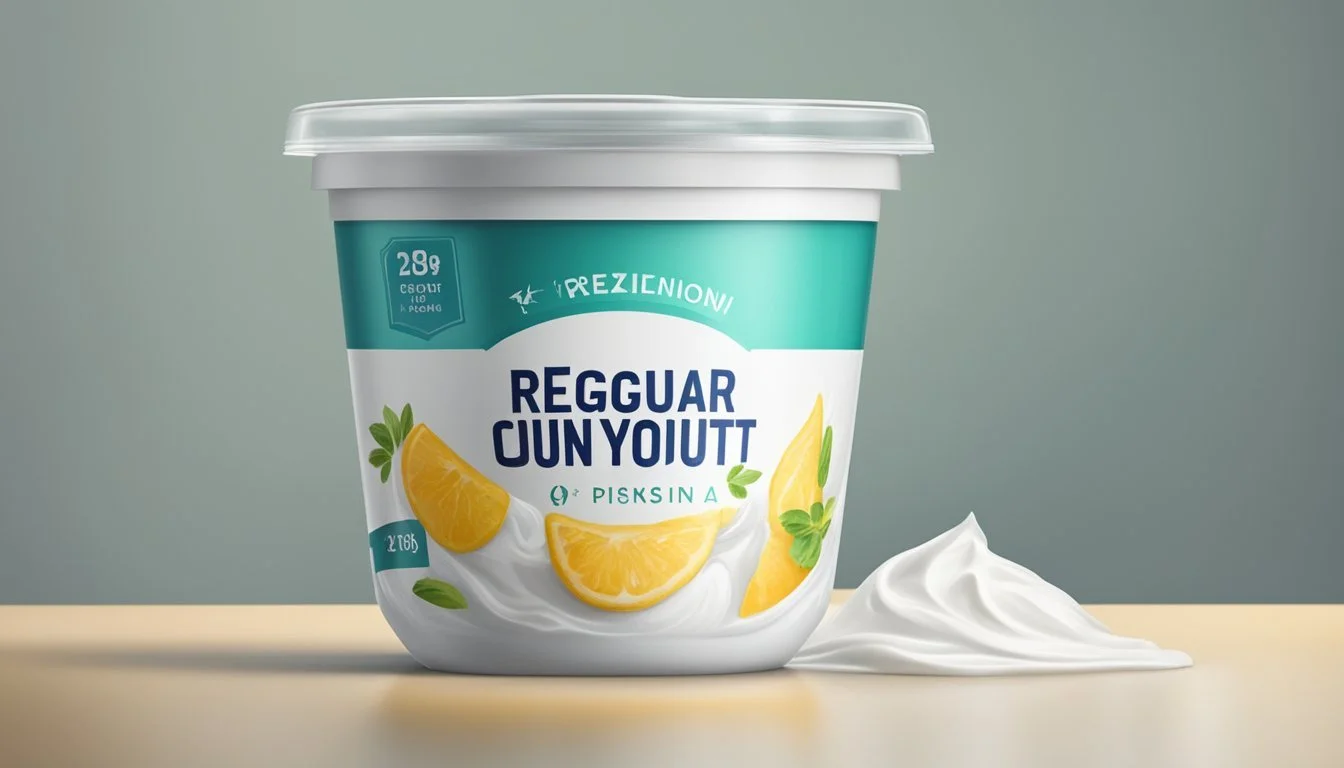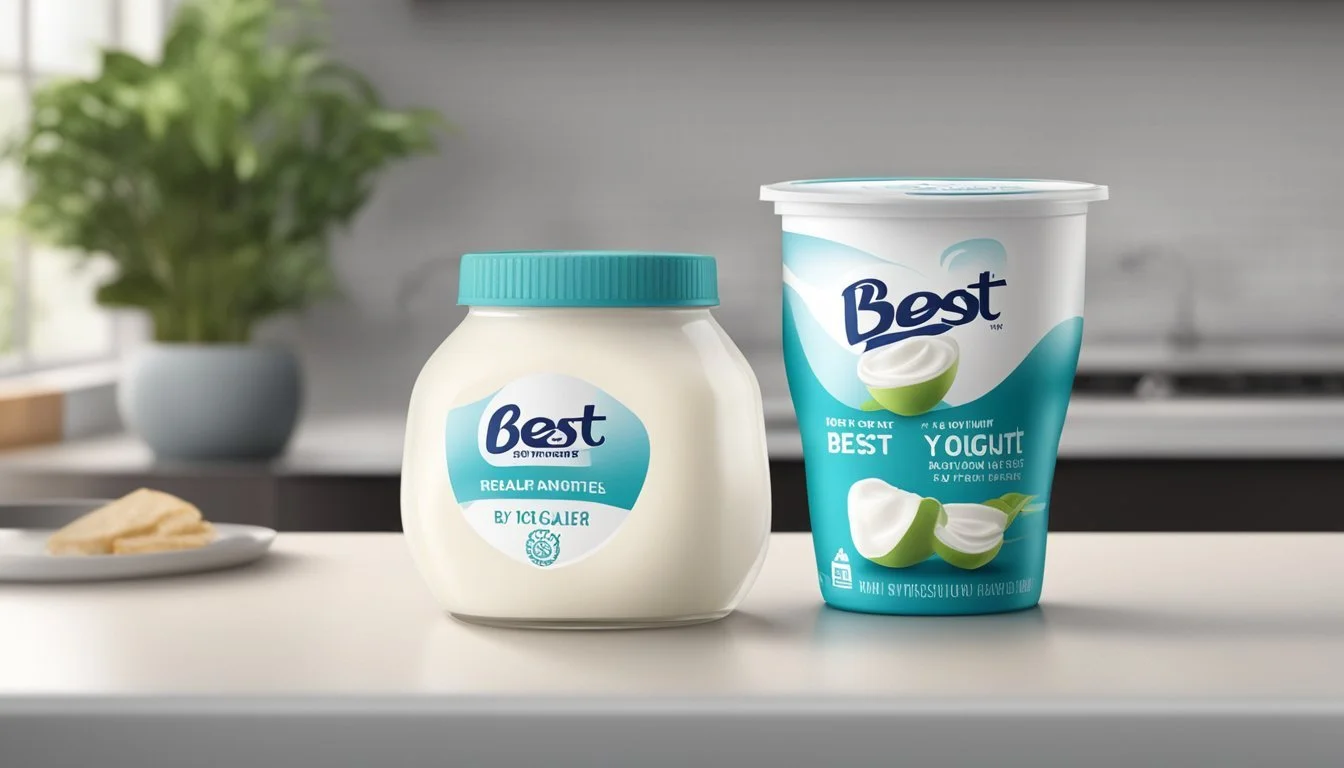How Long Does Regular Yogurt Last?
Understanding Shelf Life and Storage
Understanding the shelf life of regular yogurt is important for both safety and quality. A "Best If Used By/Before" or "Use-By" date is commonly found on yogurt containers to help consumers determine peak quality. While these dates are not federally mandated outside of infant formula, they serve as a guideline. Regular yogurt typically remains edible up to two weeks past this printed date when stored properly in the refrigerator.
Proper storage is key to extending the life of yogurt beyond its labeled date. Yogurt should be kept at a consistent temperature in the refrigerator, at or below 40ºF. Once opened, the yogurt can still last for about one to two weeks if refrigerated correctly. It's essential to note that opening the container introduces bacteria from the environment, which can affect longevity.
The appearance, smell, and texture of yogurt are telltale signs of its condition. Consumers should discard yogurt that has an off smell, any signs of mold, or has separated extensively, which can indicate spoilage. Freezing yogurt is an option for extended storage, but this can alter its texture and quality, making it best suited for use in smoothies or baking rather than consumption as a stand-alone snack.
Yogurt Fundamentals
Yogurt is a dairy product produced by the fermentation of milk with live bacterial cultures. These beneficial bacteria, most commonly Lactobacillus bulgaricus and Streptococcus thermophilus, convert lactose in milk into lactic acid, which thickens the milk and gives yogurt its distinctive tang.
There are various types of yogurts available, including:
Regular Yogurt: This type has a relatively fluid texture and a balanced flavor.
Greek Yogurt: Strained to remove whey, it is thicker and creamier with a higher protein content.
Low-Fat Yogurt: Made with skim or low-fat milk, it offers a reduced-fat option.
Natural Yogurt: No added sweeteners or flavorings.
Yogurt is valued for its:
Protein: Vital for muscle repair and growth.
Calcium: Essential for strong bones and teeth.
Nutrients: B vitamins, phosphorus, and magnesium are present.
Probiotics: These live cultures enhance gut health.
Yogurt's shelf life and freshness are influenced by storage conditions. It should be kept in the fridge, as temperature stability is critical for maintaining quality. Variations in yogurt types, such as regular or Greek, may show slight differences in shelf life due to their unique processing methods. Consumers should always check the yogurt’s date label and store it appropriately to ensure they enjoy it while it is still fresh and provides the full spectrum of its nutrients.
Understanding Expiration
Safe consumption of yogurt depends on understanding the dates on its packaging. Manufacturers typically use these dates to indicate yogurt’s peak quality rather than safety.
Expiration Date
The expiration date on a yogurt container is not federally regulated, except for in the case of infant formula. For regular yogurt, this date indicates the end of its optimal quality as determined by the manufacturer.
Sell-By Date
The sell-by date advises retailers how long to keep the product on the shelves. In most cases, yogurt is still consumable for a period of time after this date, presuming it has been stored correctly at below 40 degrees Fahrenheit.
Use-By Date
The use-by date, also known as the best by date, is the manufacturer’s estimate of the last day the yogurt will be at its best quality. Yogurt can be safe to consume beyond this date but may experience changes in taste or texture.
Storage Guidelines
Proper storage is critical to maintaining the quality and safety of yogurt. To ensure optimal freshness, consumers should adhere to specific storage guidelines for refrigeration and freezing, taking into account temperature control and container sealing.
Refrigerated Storage
Once purchased, yogurt should be stored in the refrigerator, maintaining a consistent temperature at or below 40°F. The yogurt's shelf-life in the refrigerator depends on whether it is opened or unopened:
Unopened Yogurt: Can typically last until the sell-by or use-by date, sometimes 2-3 weeks beyond this date when properly refrigerated.
Opened Yogurt: Ideally should be consumed within 5-7 days. A sealed container is best to prevent contamination and preserve quality.
Freezing Yogurt
For longer storage, yogurt can be placed in the freezer, where a temperature of 0°F is ideal for maintaining quality:
Freezing: Extends a yogurt's life for up to 2 months.
Texture Changes: Freezing may alter the texture and consistency of the yogurt, so it is recommended primarily when the yogurt will be used for cooking or baking.
Shelf-Life Maximization
Each consumer plays a role in maximizing the shelf life of yogurt through proper storage practices:
Temperature: Always keep yogurt at the appropriate refrigeration or freezing temperature.
Sealed Container: When refrigerating opened yogurt, ensure it is in a tightly-sealed container to prevent exposure to bacteria and other contaminants.
Prompt Return: After using yogurt, immediately return it to refrigeration to limit time at room temperature, which should not exceed 2 hours.
Determining Yogurt Quality
Determining the quality of yogurt involves a combination of visual, olfactory, and tactile assessments. These evaluations ensure that the yogurt consumed is fresh and safe.
Visual Inspection
When inspecting yogurt, one should look for signs of mold and discoloration, which are clear indicators of spoilage. The surface of high-quality yogurt is typically smooth and uniform. Any presence of mold, which may appear as blue, green, black, or white fuzzy spots, indicates contamination and the yogurt should be discarded.
Smell Assessment
The smell of yogurt should be slightly tangy but not overpowering. A rancid smell is a strong indication that the yogurt has gone bad. If the yogurt emits an unpleasant, sour scent that deviates from its expected creamy aroma, it is likely no longer suitable for consumption.
Texture and Consistency
Yogurt's texture should be creamy and consistent throughout. Severely separated liquid on the surface, or a curdled texture, suggests that the yogurt's quality has diminished. Though some separation of whey (liquid) is normal, excess amounts could mean spoilage. Texture changes are often a precursor to visible mold and should be treated as a warning sign.
Freshness and Spoilage
When it comes to yogurt, understanding its shelf life and identifying spoilage are crucial for both freshness and food safety. Once opened, yogurt's freshness is affected by several factors, and recognizing the signs of spoilage is essential for safe consumption.
Shelf Life After Opening
Once opened, yogurt's shelf life is considerably shorter than when it's sealed. Typically, opened yogurt should be consumed within 3 to 7 days to ensure its freshness. Refrigeration plays a pivotal role in maintaining its quality during this period. It's important to note that the "best by" date on yogurt packaging refers to unopened containers and once the seal is breached, this date is no longer a reliable indicator of freshness.
Shelf Life Guidelines for Opened Yogurt:
Regular yogurt: 3 to 7 days
Greek yogurt: 1 week
Flavored or fruit-infused yogurt: 3 to 5 days
Spoilage Signs
Spotting signs of spoilage in yogurt is key to avoid consuming a potentially harmful product. One should look for changes in appearance, smell, and texture.
Signs of Yogurt Spoilage:
Appearance: Presence of mold or a large amount of liquid on the surface
Smell: A sour or unusual odor that differs from the typical tangy smell of yogurt
Texture: Any deviation from the smooth consistency, like lumps or excessive thinness
If any of these spoilage signs are evident, the yogurt should not be consumed. These indicators serve to protect consumers from potential foodborne illnesses and to distinguish when the product has gone bad.
Health and Safety Concerns
When it comes to yogurt consumption, understanding the risks associated with bacterial growth and the potential for spoilage is crucial for avoiding foodborne illness.
Bacterial Growth
Yogurt inherently contains beneficial bacteria that aid in digestion. However, when left at temperatures above 40°F, pathogenic bacteria can proliferate, making it unsafe to consume. Careful storage in a refrigerator below 40°F is imperative to inhibit these bacteria from multiplying to harmful levels.
Spoilage and Illness
Spoilage can indicate that yogurt is no longer safe to eat. Signs of spoilage include:
Sour smell
Off-flavor
Visible mold
Excessive watery whey on the surface
Eating spoiled yogurt may result in food poisoning, with symptoms such as nausea, vomiting, and diarrhea. It is important to note that health risks may be more pronounced in the elderly, infants, pregnant women, and those with weakened immune systems.
Consumption Safety
To minimize health risks, it is recommended to:
Consume yogurt before the "Use-By" date.
Discard any yogurt left out at room temperature for over two hours.
Check for spoilage signs before eating.
If any uncertainty arises about the safety of the yogurt, it is safer to err on the side of caution and discard the product. Remember, quality does not equate to safety — yogurt past its "Best If Used By" date may lack in taste or texture but can still be safe to consume if properly stored.
Optimal Usage of Yogurt
When incorporated correctly, yogurt can enhance the flavor and shelf life of various recipes. It serves dual functions: as a key ingredient in culinary preparations and as a natural preservative.
Yogurt in Recipes
Yogurt is a versatile ingredient that can be consumed directly or used in recipes. Here's how to use it effectively:
Flavor: It adds a creamy, tangy component to dishes, complementing both sweet and savory flavors.
Smoothies: Yogurt is commonly included in smoothie recipes for its rich texture and protein content.
Salad Dressing: Yogurt can replace mayonnaise or other fats in salad dressings, offering a healthier option with probiotics.
To maintain the integrity of yogurt in recipes, it's essential to consider the cooking process. For instance, adding yogurt to a hot dish requires tempering to prevent curdling. When integrating yogurt into recipes, chefs recommend using full-fat versions for a more stable incorporation.
Yogurt as a Preservative
Yogurt possesses natural preservative qualities due to its acidity and beneficial bacteria content. Its application in the preservation of foods includes:
Extending Shelf Life: Small amounts of yogurt can help sustain the freshness of homemade dips and spreads.
Fermentation Starter: Yogurt can act as a starter culture for fermenting various foods, leveraging its bacteria to foster the preservation process.
As a preservative, yogurt is effective in small quantities, contributing to the flavor profile and longevity of the foods it accompanies. Remember that the yogurt's efficacy as a preservative will depend on the freshness of the yogurt itself and how it is stored and handled.
Extended Applications
When regular yogurt surpasses its peak freshness, it retains value for certain uses beyond direct consumption. These applications take advantage of yogurt's nutritional content and unique properties.
Infant Formula
Yogurt is not an appropriate substitute for infant formula; it's important to understand that babies under 6 months should only be fed breast milk or formula specifically designed for infants. However, for older infants who have started consuming solid foods, plain yogurt can be a nutritious addition to their diet. One should always consult with a pediatrician before introducing yogurt to ensure it aligns with the infant's dietary needs.
Alternative Uses
Expired but not spoiled yogurt can find a place in the kitchen for a variety of alternative uses. Including it in a blender as part of a smoothie can mask any slight tanginess while still providing probiotic benefits. Regular yogurt can also serve as:
A base for marinades, tenderizing meats with its acidity.
A substitute for buttermilk or sour cream in baking.
A rich additive for sauces, contributing creaminess without the fat content of cream.
Utilizing yogurt in these contexts allows one to minimize waste while still enjoying its culinary contributions.
Additional Considerations
When discussing how long regular yogurt lasts, it's essential to take into account both its environmental impact and the role that packaging and sealing play in preservation.
Environmental Impact
The longevity of regular yogurt is closely tied to the environment in which it's stored. Perishable foods like yogurt rely heavily on appropriate temperatures to maintain freshness. Yogurt should be stored in a refrigerator at or below 40°F (4°C) to minimize the growth of harmful bacteria. Prolonged exposure to higher temperatures accelerates spoilage. Environmental factors also include the presence of preservatives and added sugar in the yogurt—these can sometimes extend shelf life by inhibiting bacterial growth.
Packaging and Sealing
The manner in which yogurt is sealed affects its shelf life significantly. Yogurt containers should be airtight to prevent contamination from external bacteria and to retain the product's original quality. Once opened, it's advisable to consume the yogurt promptly or ensure it is resealed properly if stored for later use. Packaging materials can also impact yogurt's freshness—containers that offer a stronger barrier against oxygen and moisture can help prolong shelf life.

